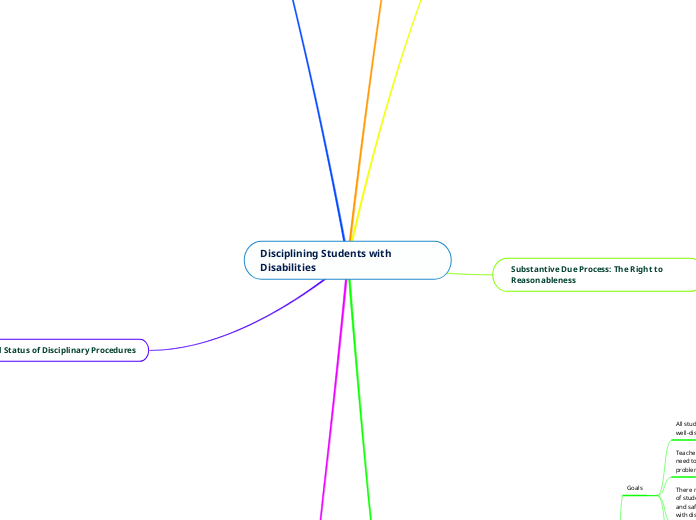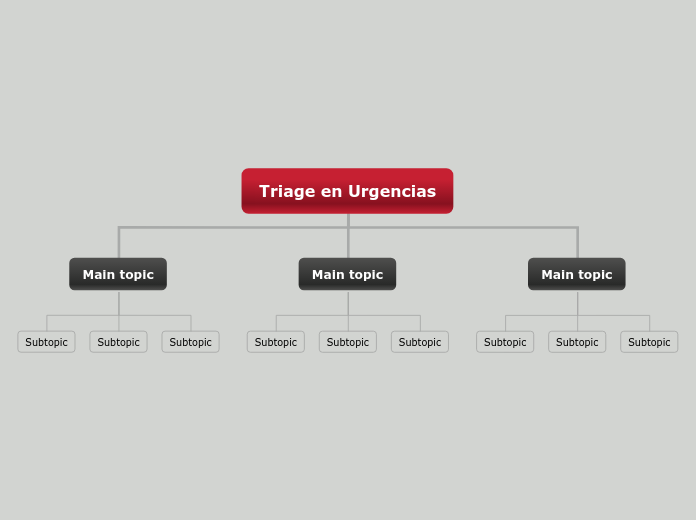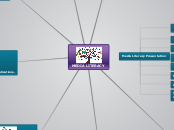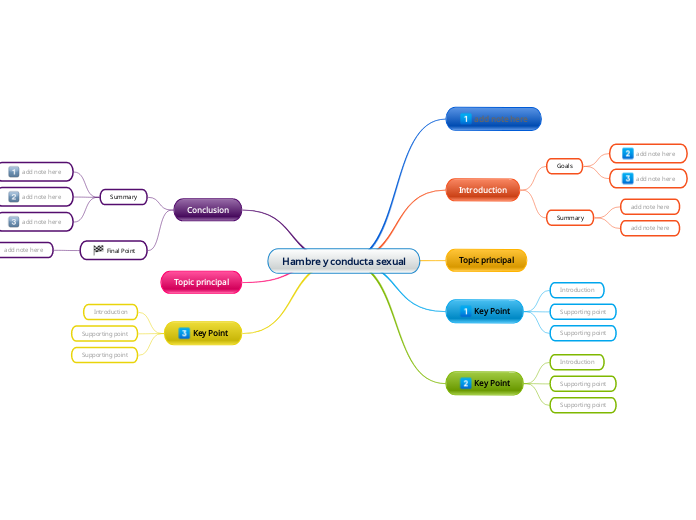Disciplining Students with Disabilities
Disciplining Students Not Yet Eligible for Special Education
Honig Injunctions
Obtaining an Injunction
School officials must convince a hearing officer that unless a student is removed from the current placement, the student is dangerous and substantially likely to injure himself or herself or others
School officials can overcome this preference only by showing that maintaining the child in his or her current placement is substantially likely to result in injury either to himself or herself, or to others
The Supreme Court stated that any action brought by a school district to obtain a TRO will carry a presumption in favor of a student's current educational placement
Referral to Law Enforcement and Courts
Furthermore, the school personnel can transmit copies of all the student's special education and disciplinary records to law enforcement
Moreover, law enforcement and judicial authorities can exercise their authority under the law when confronted with a crime committed by a student who is in special education
School personnel may report to police a crime committed by a student with a disability who is protected by the IDEA
The Legal Status of Disciplinary Procedures
Weapons
The Gun-Free and Students with Disabilities
A policy guidance statement issued by the US Department of Education stated that the FAPE and the stay-put requirements of the IDEA prohibited the automatic removal of any student with a disability for disability-related misbehavior
Prohibited Procedures
Restraint and Seclusion
They are procedures that are generally used as a last-resort intervention for students who are out of control and posing a danger to themselves and others
Policies regarding the use of restraint and seclu- sion should provide that each incident involving the use of restraint or seclusion should be docu- mented in writing and provide for the collection of specific data that would enable teachers, staff, and other personnel to understand and implement the preceding principles
Policies regarding the use of restraint and seclusion should be reviewed regularly and updated as appropriate
Parents should be notified as soon as possible
following each instance in which restraint or seclusion is used with their child
Parents should be informed of the policies on restraint and seclusion at their child’s school or other educational setting, as well as applicable Federal, State, or local laws
Every instance in which restraint or seclusion is used should be carefully and continuously and visually monitored to ensure the appropriateness of its use and safety of the child, other children, teachers, and other personnel
Teachers and other personnel should be trained regularly on the appropriate use of effective alternatives to physical restraint and seclusion, such as positive behavioral interventions and supports and, only for cases involving imminent danger of serious physical harm, on the safe use of physical restraint and seclusion
Behavioral strategies to address dangerous behavior that results in the use of restraint or seclusion should address the underlying cause or purpose of the dangerous behavior
The use of restraint or seclusion, particularly when there is repeated use for an individual child, multiple uses within the same classroom, or multiple uses by the same individual, should trigger a review and, if appropriate, revision
of strategies currently in place to address dangerous behavior; if positive behavioral strategies are not in place, staff should consider developing them
Restraint or seclusion should never be used in
a manner that restricts a child’s breathing or
harms the child
Restraint or seclusion should never be used
as punishment or discipline (e.g., placing in seclusion for out-of-seat behavior), as a means of coercion or retaliation, or as a convenience
Any behavioral intervention must be consistent
with the child’s rights to be treated with dignity
and to be free from abuse
Policies restricting the use of restraint and
seclusion should apply to all children, not just
children with disabilities
Physical restraint or seclusion should not be
used except in situations where the child’s
behavior poses imminent danger of serious physical harm to self or others and other interventions are ineffective and should be discontinued as soon as imminent danger of serious physical harm to self or others has dissipated
Schools should never use mechanical restraints to restrict a child’s freedom of movement, and schools should never use a drug or medication to control behavior or restrict freedom of movement (except as authorized by a licensed physician or other qualified health professional)
Every effort should be made to prevent the need for the use of restaurant and for the use of seclusion
Corporal Punishment
According to the Center for Effective Discipline, 31 states have banned the use of it in schools, and 19 schools have laws that allow it
Long-term Suspension and Expulsion
If the IEP team determines that a student's misbehavior and his or her disability are not related, long-term suspensions and expulsions are legal
Legally Sound In-School Suspension Policies
Document in-school suspension
Continue to provide an appropriate education
Supervise ISS with a paraprofessional or a teacher
Inform parents when a student is placed in ISS
Provide a warning to students when their behavior may lead to ISS
Haven a written policy informing students and parents of when violation of rules may result in a s student being placed in ISS
Controlled Procedures
Conclusion
Time-out, in-school suspension, and out-of-school suspension are permitted if used appropriately
Out-of-School Suspension
It refers to a short-term from a school for a specified period of time, accompanied by a cessation of educational services
In-School Suspension
Advantages:
the student continues to receive an education during the suspension period
I think that this is way better than having the student at home and not doing anything at all, what if the student goes home and starts regression in its learning can be impacted not for good? Also, if the students can still have education during the suspension, that means that they might also receive teachings about how to learn to not have bad behavior.
the student being disciplined is segregated from the general school population
it avoids the possibility of the suspended student roaming the community unsupervised
A student works on appropriate educational material provided by the teacher
Time-Out
Used by teachers of students with disabilities, it is a positive reinforcement for inappropriate behavior
Permitted Procedures
These procedures are unobtrusive and do not result in a change of placement or the denial of the right to a FAPE:
Verbal reprimands, warnings, contingent observation, exclusionary time-out, response cost, detention, and the temporary delay or withdrawal of goods, services, or activities
Include those practices that are part of school district's disciplinary plan and are commonly used with all students
Lessons from Litigation and Legislation
4. Document disciplinary actions taken and intervention implemented and evaluate their effectiveness
3. Address problem behavior in the IEP
2. Recognize the dual disciplinary standard
1. Formulate and disseminate discipline policies and procedures
The IDEA and Discipline
Stay-Put Provision
IDEA 2004 significantly altered the stay-put rule:
If a parents objects to this placement change and requests a due process hearing, the stay-put rule would normally function to keep a student in the previous placement during the hearing
First, school officials may moved student to an IAES for no more than 45 school days for the aforementioned infractions
When parents disagree with a change in placement proposed by a school district, the IDEA's stay put provision prohibits the district from unilaterally changing placement
Interim Alternative Educational Settings
Include services designed to keep the misbehavior from recurring
Provide the services necessary to allow the student to meet his or her goals from the IEP
Allow the student to continue to participate in the general curriculum, although in a different setting
The Manifestation Determination
Assessing the Relationship
Second, the manifestation determination is not an inquiry into whether a student knew the difference between right and wrong
First, the determination must be independent of a student's disability
In conducting the manifestation determination, the team must look to the implementation of a student's IEP and the relationship between the misconduct and the student's disability
Conducting the Manifestation Determination
When conducting the test, the IEP team should consider the behavior subject to the disciplinary action and relevant information, including evaluation and diagnostic results and the student's IEP and placement
It is important that the IEP team include a person at the meeting who has specific information about the incident that led to the disciplinary action
Disciplinary Procedures
Removal for 45 School Days
School officials may unilaterally exclude a student with disabilities from school for up to 45 days without regard to whether the misbehavior was a manifestation of the student's disability if the student:
has inflicted serious bodily injury to another person while at school, on school premises, or at a school function
knowingly possesses, uses, or sells illegal furs, or sells a controlled substance at school, on school promises, or at a school function
bring, possesses or acquires a weapon at a school, on school premises, or at a school function
Long-term Disciplinary Removals
Honig vs DOE
The district court issued an injunction that prevented the school district from suspending any student with disabilities for misbehavior causally related to the student's disability
Expelling a student with disabilities would result in a placement change, the procedural safeguards of the IDEA would automatically be triggered.
Courts have long held that expulsion is a unilateral change of placement that is inconsistent with the IDEA
Short-Term Disciplinary Removals
Change in Placement
The only exception is when a student brings a weapon to school or uses, possesses, or sells illegal drugs
If the school proposes a change in placement, and the student's parents consent the proposal, the stay-put provision comes into play and the student cannot be removed from the then-current educational placement
The Case Law clearly indicates that schools may not unilaterally change the placement of a student with disabilities
When a Short-Term Disciplinary Removal Becomes a Change of Placement
IEP should determine the:
the proximity of the removals to one another
the total amount of time the student is removed
the length of the removal
A long-term suspension of more than 10 consecutive days is a change of placement under the IDEA
Provided Educational Services
After the 10th cumulative day of removal
advance toward achieving their IEP goals
receive special education and related services
progress in the general education curriculum
Addressing Problem Behavior in the IEP Process
Behavior Intervention Plans
Third, the behavioral programming will be addressed
Second, measurable behavioral goals will be listed in the annual goal section along with the procedures that will be used to measure a student's progress toward the goals and the methods for reporting a student's progress to his or her parents
First, the need for behavioral programming will be addressed in the present levels of educational performance
The key component of the plan is using positive behavior interventions that do not rely on coercion or punishment for behavior change
It needs to be individualized, proactive, and multidimensional
Meaning that the IEP should implement multiple strategies aimed at preventing problem behavior before it becomes severe enough to warrant sanctions such as suspension or expulsion
IEP team develops a BIP based on the FBA
Functional Behavioral Assessment
Functional Behavioral Assessments and Discipline
Its purpose is to develop educational programming that is related to the cause and purpose of the problem behaviors
Placed in an IAES for a weapons or a drug offense
Removed in a manner that constitutes a change in placement
First removed for more than 10 school days in a school year
Goals
Students have the right to an appropriately developed IEP with well-designed behavior intervention strategies
There must be a balanced approach to the issue of discipline of students with disabilities that reflects the need for orderly and safe schools and the need to protect the right of students with disabilities to a FAPE
Teachers and school administrators should have the tools they need to assist them in preventing misconduct and discipline problems and to address those problems, if they arise
All students, including students with disabilities, deserve safe, well-disciplined schools and orderly learning environments
Substantive Due Process: The Right to Reasonableness
Reasonableness essentially means that procedures must be rational and fair and not excessive or unsuitable for the educational setting
Schools may not be prohibit or punish conduct that has no adverse effect on public education
To be reasonable, rules must be rational and a school-related purpose, and the school must employ reasonable means to achieve compliance with the rule
This is true. Whenever I start a lesson with my students I make sure to set the rules so the students can know that I am setting limits in my classroom and that they have to respect me and their peers. For example, one of my rules is to listen to others when it is their time to talk, and another one is to raise your hand.
The power to establish rules and regulations, however, is not absolute, for when these regulations are developed, they must not violate constitutional principles
Procedural Due Process: The Right to Fair Procedures
Ensuring that Discipline Practices are Nondiscriminatory
School district may violate Section 504:
disciplining a student using procedures that are prohibited in the IEP or behavior intervention plan
Suspending (long-term), expelling, or changing the placement of a student with disabilities for misbehavior that is related to the student's disability
disciplining students with disabilities by using procedures that are more harsh than those used with non disabled students who exhibit similar misbehavior
disciplining students with disabilities by using procedures that are not used with non disabled students who exhibit similar misbehavior
Discrimination refers to unequal treatment of qualified students with disabilities based solely on the basis of the disability
Extending Due Process Protections to Students
Long-Term Suspension and Expulsion (must be a formal meeting)
Right of appeal
A written or taped record of the proceedings
Right to confront witnesses and present their own witnesses
Hearing (advance notice of time, place, and procedures)
Notice of evidence, witnesses and substance of testimony
Written notice specifying charges
Short-Term Suspension (may be a formal or informal meeting)
Opportunity to respond to charges
Written or oral notice of charges
Developing School-wide Discipline Policies
If a student's IEP team determines that:
The policy does not violate not violate the requirements of the IEP, the team may use the student's IEP or BIP to affirm that the student will be subject to the district's regular discipline policies and procedures
He or she will be subject to the school district's regular disciplinary policy
In a few situations, however, general discipline policies must be changed when applied to students in special educations:
Interferes with a student's IEP, Behavior Intervention Plan, or Section 504 accommodation plan
Triggers the procedural safeguards of the IDEA
Deprives a students in his or her special education and related services
Student accountability to rules implies that violators will be subject to disciplinary sanctions or consequences
Students should know which behaviors are acceptable and which behaviors are prohibited
School must develop rules that regulate student conduct
Discipline in the Schools
All students, with or without disabilities, have rights in disciplinary matters based on the due process clause of the 5th and the 14th Amendments to the US constitution
I believe that this is fair because I can recognize that sometimes as a teacher we have a conflict with disciplining students, especially students with disabilities. There was a moment during my practicum when I had two students that I did not know how to discipline but my mentor teacher told me to make sure to tell them that when are distracting themselves, I should tell them that if they are doing great they are going to get a ticket.
The courts' recognition of the importance of school authority over student behavior originates from the English common law concept of in loco parentis:
Parents acquiesce in the control over their children when their children are placed in the charge of school personnel
Student accountability to rules usually implies that violators will be subject to disciplinary sanctions
In order to operate efficiently and effectively, schools must have rules to regulate student conduct









